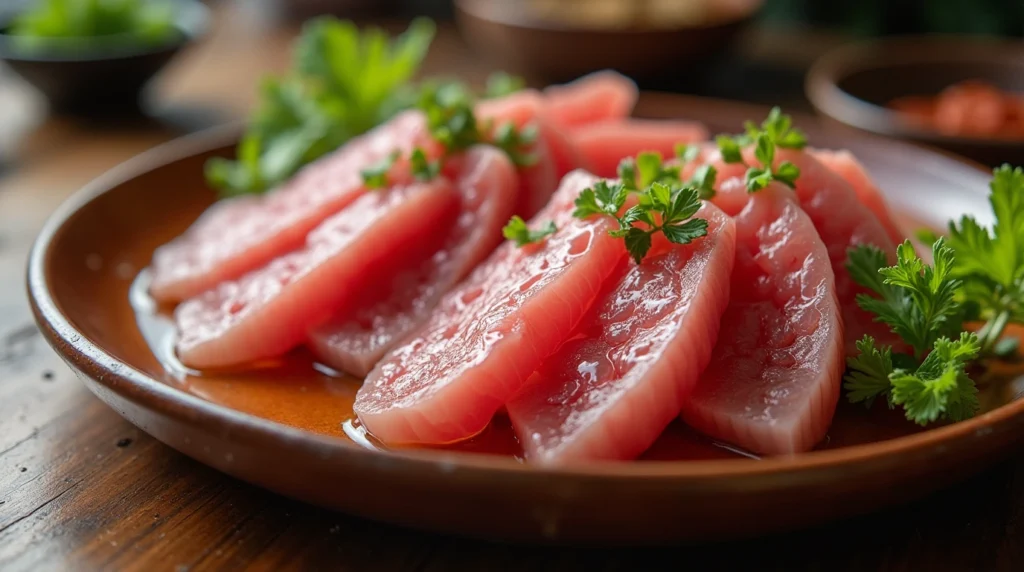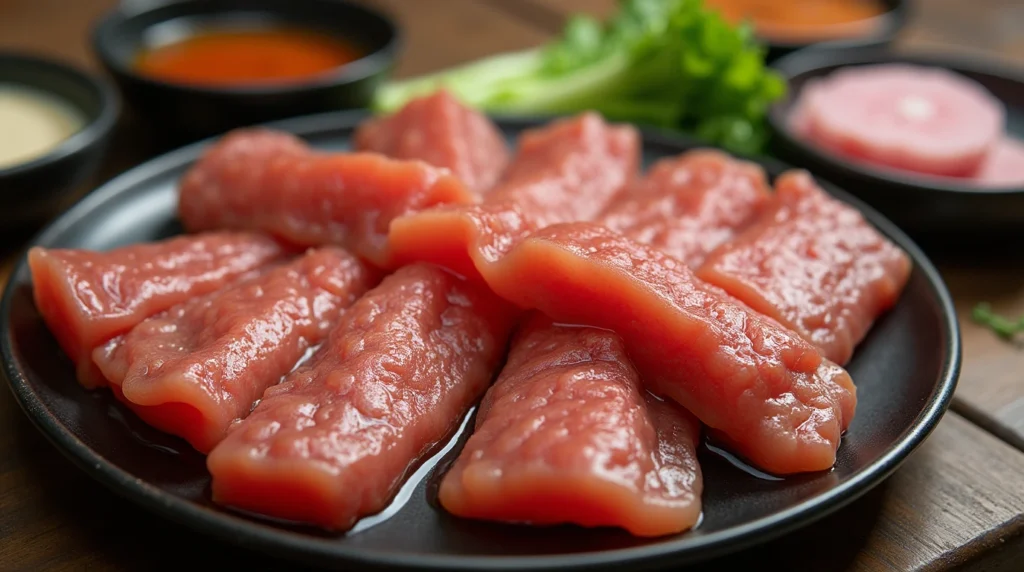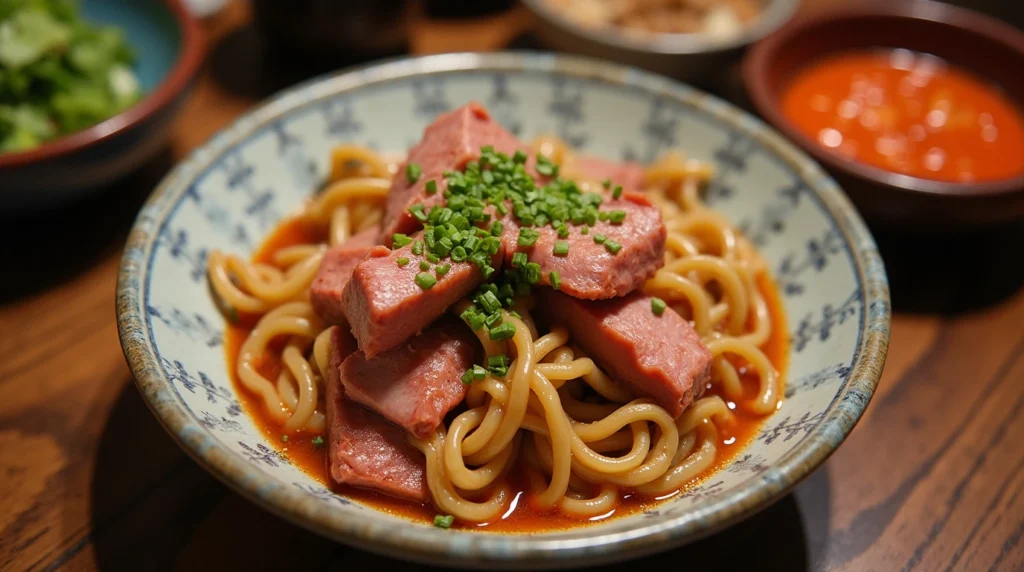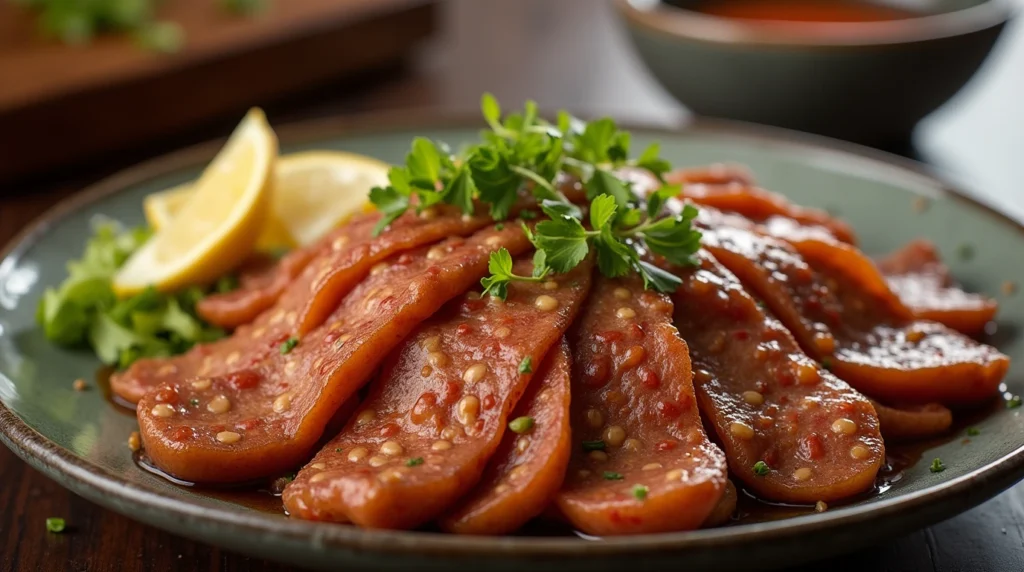Introduction: The Magic of Bulgogi

Imagine the sizzle of thinly sliced beef hitting a hot grill, the aroma of garlic, soy sauce, and sesame oil filling the air, and the first bite of tender, caramelized meat melting in your mouth. That’s the magic of bulgogi, a dish that’s not just food but an experience. Whether you’ve fallen in love with it at a Korean BBQ restaurant or are curious to try it for the first time, this guide will show you how to make authentic bulgogi at home.
Bulgogi, which translates to “fire meat,” is more than just a meal—it’s a celebration of Korean culture, family, and flavor. By the end of this article, you’ll not only master the art of making bulgogi but also understand its rich history, the secrets behind its marinade, and how to serve it like a pro. Let’s dive in!
1. What is Bulgogi?
The History of Bulgogi in Korean Cuisine
- Bulgogi dates back to the Goguryeo era (37 BCE–668 CE), where it was called maekjeok and cooked on skewers.
- It evolved into neobiani, a dish for royalty, before becoming the beloved BBQ staple we know today.
- Bulgogi is now a symbol of Korean hospitality, often served at family gatherings and celebrations.
Why Bulgogi is So Popular
- Its sweet and savory flavor profile appeals to a wide range of palates.
- The dish is incredibly versatile—it can be grilled, stir-fried, or even used in fusion dishes like tacos or bowls.
- Bulgogi has gained global fame, appearing on menus in Korean restaurants worldwide.
Key Characteristics of Authentic Bulgogi
- Thinly sliced beef: The foundation of the dish.
- Flavorful marinade: A balance of sweet, salty, and umami flavors.
- Quick cooking time: Perfect for weeknight dinners or impromptu gatherings.
2. Ingredients for Authentic Bulgogi
Essential Ingredients for the Bulgogi Marinade
Here’s what you’ll need to create the perfect marinade:
| Ingredient | Role |
|---|---|
| Soy sauce | Base of the marinade, providing saltiness and umami. |
| Sugar | Adds sweetness and helps caramelize the meat. |
| Sesame oil | Infuses a nutty aroma and richness. |
| Garlic | Enhances flavor with its pungent, savory notes. |
| Pear | Tenderizes the meat and adds natural sweetness. |
| Ginger | Adds a warm, slightly spicy kick. |
| Rice wine (mirin) | Balances flavors and tenderizes the beef. |
Choosing the Right Cut of Beef
- Best cuts: Ribeye or sirloin for their tenderness and marbling.
- Pro tip: Ask your butcher to slice the beef thinly, or freeze it for 30 minutes to make slicing easier at home.
Optional Add-Ins and Substitutions
- No pear? Use apple or kiwi for a similar tenderizing effect.
- Gluten-free option: Substitute soy sauce with tamari.
- Low-sugar alternative: Replace sugar with honey or a sugar substitute.

3. How to Make Bulgogi Marinade
Step-by-Step Instructions for the Marinade
- In a bowl, combine 1/2 cup soy sauce, 2 tablespoons sugar, 1 tablespoon sesame oil, 4 minced garlic cloves, 1/4 cup grated pear, 1 teaspoon grated ginger, and 2 tablespoons rice wine.
- Whisk until the sugar dissolves and the mixture is well combined.
Marinating the Beef
- Place the thinly sliced beef in a large ziplock bag or bowl.
- Pour the marinade over the beef, ensuring every piece is coated.
- Marinate for at least 30 minutes, but for best results, let it sit for 2-4 hours (or overnight in the fridge).
Preparing the Meat for Cooking
- Drain excess marinade to prevent steaming instead of searing.
- Let the beef come to room temperature for even cooking.
4. Cooking Bulgogi: Step-by-Step Instructions
Grilling Bulgogi
- Preheat your grill or stovetop grill pan to medium-high heat.
- Grill the beef in batches to avoid overcrowding, cooking for 2-3 minutes per side until caramelized and slightly charred.
Cooking Bulgogi in a Skillet
- Heat a tablespoon of oil in a large skillet or wok over medium-high heat.
- Cook the beef in batches, stirring occasionally, until browned and cooked through (about 4-5 minutes).
Serving Suggestions
- Serve bulgogi with steamed rice, lettuce wraps, and kimchi.
- Pair it with Korean side dishes (banchan) like japchae (glass noodles) or pickled radish.
5. Tips and Tricks for Perfect Bulgogi
How to Store and Reheat Bulgogi
- Storage: Keep leftovers in an airtight container in the fridge for up to 3 days or freeze for up to 3 months.
- Reheating: Use a skillet over medium heat to retain moisture and prevent drying out.
Common Mistakes to Avoid
- Over-marinating: Can make the meat mushy. Stick to the recommended time.
- Wrong cut of beef: Avoid lean cuts that can dry out during cooking.
- Overcrowding the pan: Prevents proper caramelization.
Creative Ways to Use Leftover Bulgogi
- Bulgogi tacos: Serve in tortillas with slaw and spicy mayo.
- Bulgogi fried rice: Stir-fry with rice, veggies, and a fried egg.
- Bulgogi bowls: Layer with rice, veggies, and a drizzle of gochujang sauce.
Vegan and Vegetarian Alternatives
- Substitute beef with tofu, mushrooms, or seitan.
- Use the same marinade for a plant-based twist on this classic dish.
6. The Science Behind the Perfect Bulgogi Marinade
Why Pear is the Secret Ingredient
- Enzymatic action: The natural enzymes in pear (like bromelain) break down proteins, tenderizing the beef without making it mushy.
- Natural sweetness: Pear adds a subtle sweetness that balances the savory flavors of soy sauce and garlic.
- Pro tip: If you don’t have pear, kiwi or pineapple can be used as alternatives, but use them sparingly as they are more potent.
The Role of Sugar in authentic bulgogi
- Caramelization: Sugar helps create that beautiful, caramelized crust when grilling or pan-frying.
- Flavor balance: It offsets the saltiness of soy sauce and enhances the overall umami profile.
- Health-conscious option: Substitute sugar with honey or maple syrup for a natural sweetener.
Umami Boosters in the Marinade
- Soy sauce: The primary source of umami, providing depth and richness.
- Sesame oil: Adds a nutty aroma and enhances the savory notes.
- Garlic and ginger: These aromatics elevate the flavor profile, making the dish more complex and satisfying.
7. Pairing Bulgogi with Traditional Korean Sides
Banchan: The Art of Korean Side Dishes
- Kimchi: A fermented vegetable dish (usually cabbage or radish) that adds a tangy, spicy kick.
- Japchae: Sweet potato glass noodles stir-fried with vegetables and sesame oil.
- Pickled radish: A refreshing, crunchy side that cuts through the richness of bulgogi.
- Spinach namul: Blanched spinach seasoned with sesame oil, garlic, and soy sauce.
How to Build a Korean BBQ Feast at Home
- Set the table: Include small bowls for banchan, a large platter for bulgogi, and individual rice bowls.
- Interactive dining: Let everyone wrap bulgogi in lettuce leaves with rice, kimchi, and a dab of ssamjang (spicy dipping sauce).
- Pro tip: Serve with soju or makgeolli (Korean rice wine) for an authentic experience.

8. Fusion Dishes to Try
Tacos
- Fill soft tortillas with bulgogi, shredded cabbage, and a drizzle of spicy mayo or gochujang sauce.
- Top with fresh cilantro and a squeeze of lime for a zesty twist.
Pizza
- Use bulgogi as a topping on a thin-crust pizza, along with mozzarella, caramelized onions, and a sprinkle of sesame seeds.
- Finish with a drizzle of sesame oil and chopped green onions.
Burgers
- Mix bulgogi with ground beef to create flavorful patties.
- Serve on brioche buns with lettuce, tomato, and a spicy mayo sauce.
9. Health Benefits of Bulgogi
High-Protein Meal
- Bulgogi is packed with protein from the beef, making it a great option for muscle repair and energy.
- Pair it with brown rice or quinoa for a balanced, nutritious meal.
Nutrient-Rich Ingredients
- Garlic and ginger: Known for their anti-inflammatory and immune-boosting properties.
- Sesame oil: Contains healthy fats and antioxidants.
- Vegetable sides: Provide fiber, vitamins, and minerals.
Lighter Versions of Bulgogi
- Use lean cuts of beef or substitute with chicken or turkey.
- Reduce sugar in the marinade or use a sugar substitute for a lower-calorie option.
11. Bulgogi Recipe Variations
Spicy Bulgogi (Bulgogi with a Kick)
- Add 1-2 tablespoons of gochujang to the marinade for a spicy version.
- Garnish with sliced chili peppers for extra heat.
Chicken Bulgogi
- Substitute beef with thinly sliced chicken breast or thighs.
- Adjust cooking time to ensure the chicken is fully cooked.
Seafood Bulgogi
- Use shrimp, squid, or scallops for a seafood twist.
- Marinate for a shorter time (15-20 minutes) to avoid overcooking.
12. In Korean Culture
Bulgogi as a Symbol of Togetherness
- In Korea, bulgogi is often enjoyed during family gatherings, holidays, and celebrations.
- The interactive nature of grilling and sharing bulgogi fosters connection and community.
Bulgogi in Modern Korean Cuisine
- Bulgogi has inspired countless fusion dishes, from bulgogi burgers to bulgogi pizza.
- It’s a testament to the dish’s versatility and global appeal.
13. Tools and Equipment for Making Bulgogi
Essential Kitchen Tools
- Sharp knife: For thinly slicing the beef against the grain.
- Mixing bowls: For preparing the marinade and marinating the beef.
- Grill or skillet: A grill pan, outdoor grill, or cast-iron skillet works best for achieving that caramelized crust.
- Tongs: For flipping the beef while cooking.
- Measuring cups and spoons: To ensure precise measurements for the marinade.
Optional but Helpful Tools
- Meat mallet: To tenderize the beef further if needed.
- Mandoline slicer: For thinly slicing vegetables like onions or carrots to serve alongside bulgogi.
- Air fryer: For a quick and mess-free cooking option.

14. Troubleshooting Common Bulgogi Issues
1-Why is My Bulgogi Tough?
- Cause: Overcooking or using the wrong cut of beef.
- Solution: Use tender cuts like ribeye or sirloin and cook the beef quickly over high heat.
2-Why is My Bulgogi Too Salty?
- Cause: Too much soy sauce or not enough sugar to balance the flavors.
- Solution: Adjust the marinade by adding a bit more sugar or diluting it with water.
9-Why is My Bulgogi Not Caramelizing?
- Cause: Overcrowding the pan or not draining excess marinade.
- Solution: Cook the beef in batches and pat it dry before cooking.
15. Bulgogi for Special Diets
Gluten-Free authentic bulgogi
- Substitute regular soy sauce with tamari or a certified gluten-free soy sauce.
- Ensure all other ingredients, like rice wine, are gluten-free.
Low-Carb authentic bulgogi
- Skip the sugar in the marinade and use a low-carb sweetener like erythritol or stevia.
- Serve bulgogi with lettuce wraps instead of rice.
Bulgogi for Kids
- Reduce the amount of garlic and ginger for a milder flavor.
- Serve with kid-friendly sides like steamed broccoli or carrot sticks.
16. In Popular Culture
Bulgogi in Korean Dramas and Movies
- Bulgogi often appears in Korean dramas as a comfort food shared between characters.
- It’s a symbol of warmth, love, and family bonding.
Bulgogi in Global Cuisine
- Bulgogi has inspired fusion dishes worldwide, from bulgogi burritos in the US to bulgogi sushi rolls in Japan.
- Its versatility and bold flavors make it a favorite among chefs and food enthusiasts.
17. How to Host a Korean BBQ Night at Home
Setting the Scene
- Create a DIY Korean BBQ station with a portable grill or hot plate.
- Provide small bowls for banchan, lettuce leaves for wraps, and dipping sauces like ssamjang and sesame oil.
Menu Ideas
- Main dish: Bulgogi (of course!).
- Sides: Kimchi, japchae, pickled radish, and steamed rice.
- Drinks: Soju, makgeolli, or Korean barley tea.
- Dessert: Bingsu (shaved ice dessert) or sweet rice cakes.
Tips for a Stress-Free BBQ Night
- Prep the marinade and sides ahead of time.
- Let guests grill their own meat for an interactive experience.
- Keep the atmosphere fun and relaxed—Korean BBQ is all about togetherness.
18. Bulgogi Around the Seasons
Summer Bulgogi
- Grill bulgogi outdoors for a smoky flavor.
- Serve with cold sides like cucumber salad and chilled noodles.
Winter Bulgogi
- Cook bulgogi in a hot pot or stew for a comforting meal.
- Pair with warm sides like spicy tofu soup or steamed dumplings.
Spring and Fall authentic bulgogi
- Incorporate seasonal vegetables like mushrooms, zucchini, or sweet potatoes.
- Experiment with lighter or richer marinades to match the season.
19. Bulgogi and Sustainability
Choosing Sustainable Beef
- Opt for grass-fed or locally sourced beef to reduce your environmental impact.
- Look for certifications like USDA Organic or Certified Humane.
Reducing Food Waste
- Use leftover bulgogi in creative ways, like fried rice or omelets.
- Repurpose vegetable scraps for homemade broth or compost.
Plant-Based Bulgogi
- Use tofu, tempeh, or mushrooms as a sustainable alternative to beef.
- The same marinade works beautifully for plant-based proteins.
Conclusion: Your Bulgogi Adventure Awaits
Making authentic bulgogi at home is easier than you think, and the results are absolutely worth it. From its rich history to its irresistible flavor, bulgogi is a dish that brings people together. Whether you’re grilling it for a family dinner or experimenting with leftovers, this recipe is sure to become a favorite.
So, what are you waiting for? Grab your ingredients, fire up the grill, and let the magic of bulgogi transform your kitchen. Don’t forget to share your creations in the comments below—we’d love to hear how your bulgogi turned out!
FAQ Section
Q: What does bulgogi taste like?
A: Bulgogi has a sweet and savory flavor with a hint of smokiness from the grill. The marinade infuses the beef with umami, garlic, and a touch of nuttiness from sesame oil.
Q: Can I make bulgogi without a grill?
A: Absolutely! A skillet or wok works perfectly for cooking bulgogi indoors.
Q: How long should I marinate bulgogi?
A: Marinate for at least 30 minutes, but for deeper flavor, aim for 2-4 hours or overnight.
Q: Is bulgogi gluten-free?
A: Traditional bulgogi uses soy sauce, which contains gluten. However, you can make it gluten-free by using tamari instead.
Q: What’s the best way to slice beef for bulgogi?
A: Freeze the beef for 30 minutes to make it easier to slice thinly against the grain.
